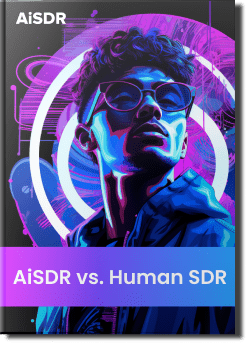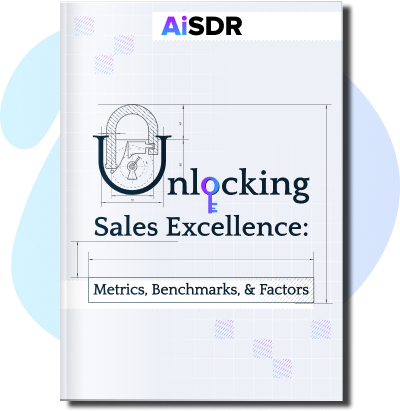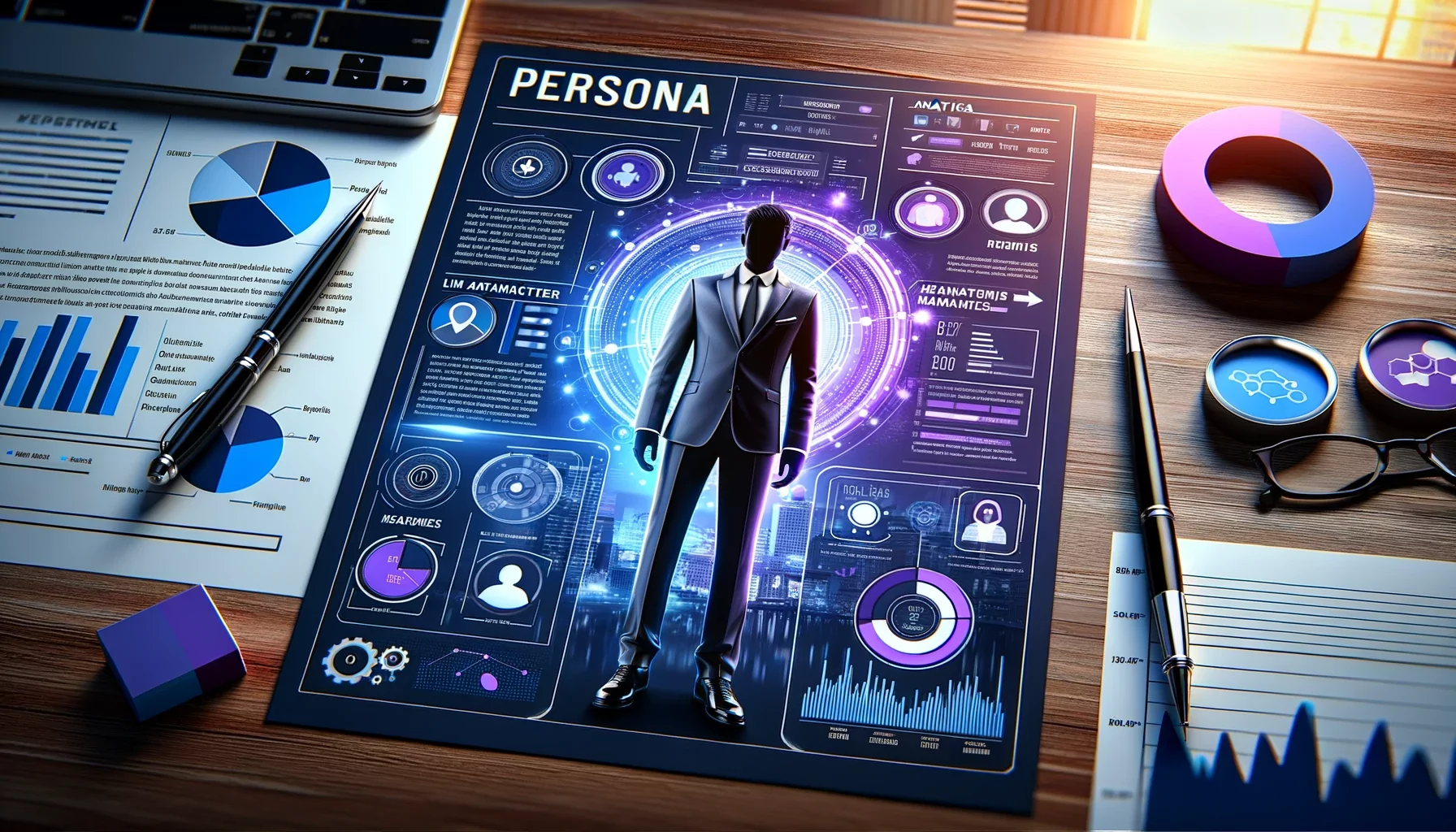What is a Buyer Persona?

Buyer personas are a tool for modeling target customers. Find out how they help and how to create one.
Amy is a 35-year-old accountant for a small business who drives to work every day from her suburban home.
As the company’s sole accountant, she handles all tax payments and reporting, often becoming overwhelmed during tax season. And she’s looking for a user-friendly tool to help her streamline processes, reduce manual errors, and save time, all while keeping data secure.
But here’s the twist: Amy isn’t a real person.
She’s a buyer persona.
Companies use buyer personas to inform their approach to content and campaigns. They can also leverage buyer personas to make sure they strike the soft spot in the hearts of target users.
And we’ll be covering the what, why, and how of buyer personas.
What is a buyer persona?
Without the help of the “Amy” buyer persona, the vendor could easily fall into the one-size-fits-all trap. Their advertising and sales efforts would have been overly generic, only highlighting the “best” product features from the team’s own viewpoint without considering the needs of customers.
You’ve probably seen product websites that appeal more to software developers than actual users. Each page is like a laundry list of features that you, as a user, might not care about, and the pages say nothing about what matters to you.
Why create a buyer persona?
When a sales team has Amy in their backpocket, they can target and tailor their sales messages more precisely. They’ll keep in mind that people like Amy will buy their product, not developers.
As they prepare everything from website content to sales scripts, your team will ask themselves: “How would Amy like this?”
The answer can even inform the development team about features that Amy would appreciate.
A good buyer persona goes beyond target demographics.
You don’t need to know Amy’s marital status or how many kids she has (unless your product happens to be targeting single mothers), but you do need to know which social media platforms she uses, which resources she turns to when making her purchase, and how she’ll make that decision.
As your teams use customer personas to inform their inbound and outbound approaches, AI sales platforms like AiSDR use key data in buyer personas to guide content, fine-tune emails, and answer responses.

A buyer persona vs. an ideal customer profile
A buyer persona represents an individual who buys your product.
An ideal customer profile (ICP) represents a company that buys your product.
It’s as simple as that.
When selling to business customers, you can benefit from creating an ICP to represent the type of company you’re targeting and a buyer persona to represent the decision-maker inside that company. For example, Amy, your buyer persona, can work for SmallBiz, your ICP.
When should you create buyer personas for sales?
Buyer personas help shape your sales and marketing strategy at any point of your business journey. If you already have customers, you can research them and build buyer personas based on real data. If your business is only starting out, you can build buyer personas based on your assumptions and market research and validate them.
How does a buyer persona benefit your business?
Personas make it easier to understand the needs, wants, and pains of your potential customers.
To that extent, a well-developed buyer persona can drive business development in multiple areas.
Product development
Buyer personas can be used to help design and incorporate features and experiences your target customer needs. For example:
- A customer-driven product design – Knowing which features your target customer needs most helps you prioritize what matters.
- A user-friendly experience – If your target customer is not particularly tech-savvy, a user-friendly interface that minimizes friction and frustration will be more important than advanced features.
- Compatibility – Many customers expect software to integrate seamlessly with their existing tech stack or toolkit.
By using sales personas as a guide, you can gain valuable insight into how you can create a user-friendly product that contains the features your customers are looking for. In turn, this should increase your chance of converting leads into sales.
Marketing
Thanks to the considerable overlap between sales and marketing activities, it’s no surprise that buyer personas can inform and streamline key marketing tasks, as well as shape your overall approach to marketing.
- Content creation – Knowing your persona’s pain points and motivations allows you to create content that resonates and speaks directly to them.
- Advertising campaigns – Instead of creating campaigns that promote features on all platforms, personas give guidance on which social media networks are more likely to yield good results, thereby optimizing your ad campaign spend and efficiency.
- Customer segmentation – You can create multiple buyer personas to develop and tailor content for different segments.
Once you’ve created content, email marketing, and paid advertising campaigns targeted to specific personas, you can proceed with other marketing tactics. For example, you can use generative AI to boost your inbound and outbound marketing strategies.
Sales tactics
A well-crafted buyer persona can be a game-changer for honing effective sales processes across the board.
- Lead qualification – Knowing your ideal customer’s characteristics makes it much easier to decide who’s more likely to buy, as well as place where a prospect is in their buyer’s journey.
- Sales pitches and presentations – You can customize sales pitches to address your user persona’s specific needs, pain points, and expectations from the buying process in language that resonates with them.
- Communication channels – Just like marketing, sales outreach is far more effective when they account for the channels and platforms preferred by the target customer.
- Objection handling – With a well-tuned buyer persona, your team can anticipate customer concerns and adjust value propositions to address them.
In short, a buyer persona enables all teams to focus their efforts on creating and selling a product that is more likely to be sold, and efficiently turning strangers into potential clients. It also increases the likelihood of long-term customer loyalty and retention as clients are more likely to be satisfied.
How do buyer personas help sales and marketing?
The main benefit of using buyer personas in business is an improved understanding of your target customers (and to an extent, market trends) and how they make purchasing decisions, which leads to more effective communication and sales growth.
Improved customer understanding
With a detailed buyer persona, you have a multi-faceted understanding of your actual customer: Their age, location, goals, pains, communication preferences, and values.
This lets you personalize your visitor experience, target advertising more effectively (especially if you’re already using a sales enablement AI), and nurture customer relationships.
For example, if you know that Amy prefers LinkedIn, wants to free up her work time, and has to get senior buy-in before purchasing, this determines your holistic approach and the scope of business activities you need to run.
You decide to reach out to her via LinkedIn, emphasize your product’s ease of use, and offer a discounted price (if you use a flat rate) or a smaller pricing tier for small businesses.
Effective communication
Detailed personas simplify the tailoring of marketing messages. They give insight into how to address the specific needs, pain points, and aspirations of your target buyer by outlining the content, tone of voice, and channel that suits them best.
Most customers appreciate this level of personalization, which is why hyper-personalization has a higher chance of converting. When people see that you understand their needs and speak their language, they’re more likely to convert and stay with you.
You can even use a buyer persona to hone your sales and marketing KPIs. For example, if Amy is a conservative user who tends to use the same solution for years, this will inform your predicted customer lifetime value.
Increased sales
The focused outreach and quick lead qualification a buyer persona offers has the potential of shortening sales cycles. Tailored messaging and fine-tuned value propositions increase conversions, and more personalized interactions lead to higher customer retention.
Still, all these benefits only apply when your buyer persona is designed and used well. It should be based on relevant and reliable data, and your team should know how to integrate it.
What are the drawbacks of buyer personas?
Good buyer personas bring with them a lot of advantages, especially if your competitors lack well-defined personas. But just like any other sales and marketing tool, buyer personas have their drawbacks and limitations.
Oversimplification
Buyer personas are, by nature, based on generalized characteristics. Accordingly, there’s a chance that they fail to reflect diversity, especially if you’re pulling data from a single source, such as your analytics software. While most of your current customers might resemble Amy, not all of them will. To avoid falling into this trap, your team should craft a gameplan for how to deal with outliers.
Data dependency
A buyer persona is only as good as the data you used to create it. Ideally, you should have valid, relevant, and recent data from a sizable sample of your actual target customers, as well as current clients. However, maintaining such a database can be a pain for a small business or startup, meaning that buyer personas can end up based on incomplete or inaccurate knowledge.
How to use buyer personas to increase sales?
Buyer personas are mostly used at the top of the funnel but can be helpful throughout the customer journey. Here is how your sales team can use a buyer persona:
- Approach the right people: Look for prospects who resemble your buyer persona.
- Customize messaging: Frame your emails and pitches to secure a favorable response from your buyer persona—and later, from real customers.
- Sound more convincing: Find the right levers and angles to convince the audience by understanding what they care about.
- Handle objections: Anticipate the persona’s likely objections, write convincing responses, and use them with real customers.
- Fine-tune your sales approach: Adopt the most effective channels and tactics to get your prospects’ attention and engage them.
All these tactics can drive your sales up—as long as you use a robust buyer persona.
How is a buyer persona created?
So, how can you create a buyer persona that gets the job done?
First, you need to collect specific and focused data about your customers: Their demographics, preferences, motivations, and goals.
The easiest way is to deep dive into your existing client base for data-driven insights. If you’re a startup that doesn’t yet have happy customers, you can study customer reviews and social media activity of competitors with a similar target audience.
This research stage is key to effective buyer persona creation. The more detailed and reliable data you have, the more accurate the representation of your ideal customer will be. You can collect data using different tools and sources:
- Customer interviews
- Surveys and questionnaires
- Focus groups with prospects and current clients
- Industry-scale analytics tools (Google Analytics, etc.)
- Social media monitoring tools (Hootsuite, Mention)
- Sales and customer service data
- Customer journey mapping
Once you’ve gathered your data, you’re ready to draft a buyer persona with your buyer’s demographics, preferences, and behavioral patterns.
If you’re operating in different markets or selling to different customer segments, a best practice is to design a buyer persona for each major segment or market — For example, you might have a persona for lone accountants like Amy and a separate persona for heads of accounting departments who are decision-makers for new software purchases.
Once you’ve created a target persona, you can use it to guide marketing and sales strategies while monitoring their effectiveness. As you test your persona, you can collect customer feedback to continuously refine your persona.
How to ensure your buyer personas are actionable?
Here are a few tips for even stronger buyer personas:
- Involve your sales team: Ask your salespeople what kind of data they need to better understand your customers and their needs.
- Encourage cross-team collaboration: Much of the data needed by the sales can be provided by marketing and customer success/support departments.
- Identify data gaps: Find out what important data about your customers you’re missing and think of how you can collect it.
- Go beyond demographics: It’s the backbone of any buyer persona, but you also need to know your customers’ pain points, motivations, and values.
Mapping a customer journey is another important task when fleshing out your buyer persona.
Finally, one last item on your to-do list would be to answer a very practical question: How does this person you just crafted become your customer?
To answer the big question, go through a series of smaller ones:
- How does this person learn about your product?
- Why do they decide to buy it?
- What exactly drives them to buy and when?
- What compels them to keep using it?
- What platform do they use to keep up with your company and with the industry/professional news in general (newsletter, social media)?
Gather this information from your actual customers and include it all in your buyer persona.
Not sure where to get this info or overwhelmed by sheer volume? That’s where sales enablement AI can step in.
How can AI help create buyer personas?
This brings us back to our original question of what is a buyer persona and how it benefits your business.
Sales enablement tools like AiSDR can use the buyer persona to generate tailored content and provide insightful responses to customers. A detailed buyer persona also arms AI with the tools and ammunition they need to personalize campaigns, deliver value, and segment audiences.
AI can even aid you as you do your buyer persona research. You can leverage AI’s natural language processing and sentiment analysis capabilities to collect, analyze, and interpret customer data from various sources, including CRMs, social media channels, and online reviews.
AI can also determine patterns, identify trends, forecast sales, and generate product recommendations. With AI tools at their disposal, both your sales teams and marketing teams can amp up their productivity and improve the way they interact with your ideal customers, especially with regards to personalization.
How does AI enable personalization in business?
Businesses use AI to analyze data from customer purchase history, profiles, preferences, and feedback. The insights they gain from the data allow them to personalize their marketing campaigns, sales pitches, product recommendations, and customer service.
Well-crafted buyer personas can help you make the most out of AI tools. AiSDR for example, can glean information from your buyer persona, using it as a basis for personalizing emails and conversations with customers. It can also use your persona examples to qualify leads and craft nurturing campaigns.
AiSDR can help ensure your personalized messages are reaching the right prospects. It does so by dividing your audience into specific segments. One way to do this is to leverage the tool’s lead discovery feature, which allows you to filter its database of companies and professionals into something as specific as ‘companies that completed Series A/B/C funding’ and ‘chief technology officers’.
buyer personas and enhanced personalization can take your sales campaigns to the next level. Add generative AI to the mix, and you’ve got a sales powerhouse.
How can generative AI improve sales?
With generative AI, automated messages go beyond just standard responses. Sales enablement tools can now learn from customer interactions, consider context, and craft human-like responses. As mentioned above, you can use tools like AiSDR to craft content for nurturing email sequences.
With AI tools effectively automating emails and sequences, it’s easier for sales teams to reach prospects at scale. And because they can now craft appropriate responses to incoming messages, sales representatives no longer have to drown in emails. Your reps will have more bandwidth for high-level strategies, value-added services, and maximized revenue capture.
AiSDR goes as far as to analyze common objections and learn to handle them. It’s programmed to help convince prospects to book an appointment with sales representatives.
You can use information from your buyer persona to train the generative AI, enabling it to appropriately respond to inbound leads and reach out to qualified prospects.
How does AI improve teamwork?
Sales cycles involve defining consumer preferences, crafting buyer personas, qualifying leads, nurturing prospects, overcoming objections, and closing deals.
Without AI automating a good part of the process, your marketing and sales teams could easily get lost in the swarm of repetitive tasks. And your reps could end up failing to do what they’re hired for—bringing in actual sales.
AI solutions like AiSDR make it easier to qualify and nurture leads, create targeted content, and speed up sales cycles by minimizing the time of lead to demo.
By shouldering much of the sales development workload, AiSDR helps your team win back its time and concentrate on high-value opportunities.
FAQ
What is a buyer persona?
A buyer persona is like your dream customer sketched out on paper. It’s a profile that tells you who they are, what they like, and how to win them over. Think of it as a cheat sheet for your sales game.
Why are buyer personas important?
Buyer personas help you focus your business activities, such as product development and sales and marketing efforts on the right people so you’re not shooting in the dark. You spend less time chasing useless leads and more time developing a great product and connecting with the right buyers for your offering.
Are buyer personas the same as ideal customer profiles?
Not completely. While they do try to model your target audience, buyer personas and ICPs have slightly different roles. Buyer personas focus on the individual people who are most likely to be the ones responsible for buying your product, such as a chief sales officer. In comparison, ICPs reflect the characteristics of organizations you want to target, such as Pepsi or Coca-Cola.
What information should buyer personas include?
You’ll want the basics like age, job, and location, but it doesn’t stop there. Dive into your target market and customer base target persona to learn their hobbies, pain points, and what keeps them up at night. The more you know, the better you can tailor your pitch.
How do buyer personas help sales and marketing campaigns?
Buyer personas are like a playbook for effective campaign strategies. They tell you how to score big with your target audience, which messages will hit home, and where to find your buyers online.











